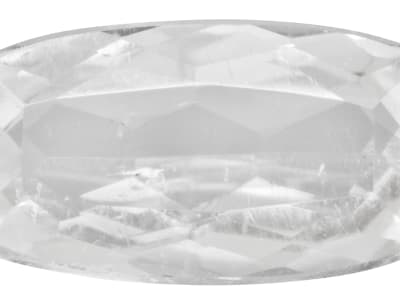Pollucite belongs to the zeolite group. It gets its name from Pollux, the twin brother of Castor, in Greek mythology. It is frequently found with petalite which was formally known as castorite. Facet grade material is prized by gemstone collectors and can be found in Afghanistan, Pakistan, Russia, and the United States. Pollucite is the most commercially important source of cesium which makes up a major constituent of its chemical formula.
General Information
LWUV: Inert to weak orange
Pollucite Colors
-
 Blue
Blue -
 Colorless
Colorless -
 Gray
Gray -
 Pink
Pink -
 White
White
Countries of Origin
Myanmar; Afghanistan; Russian Federation; Angola; Czechia; United States of America; Egypt; Madagascar; Kazakhstan; United Kingdom of Great Britain and Northern Ireland; Austria; Sweden; Mozambique; Pakistan; Morocco; Unknown; China; Brazil; Poland; Argentina; Japan; India; Canada; Norway; Namibia; Finland; Italy; South Africa; Zimbabwe; Australia; Ethiopia
Care
Pollucite is brittle so take care when handling.

